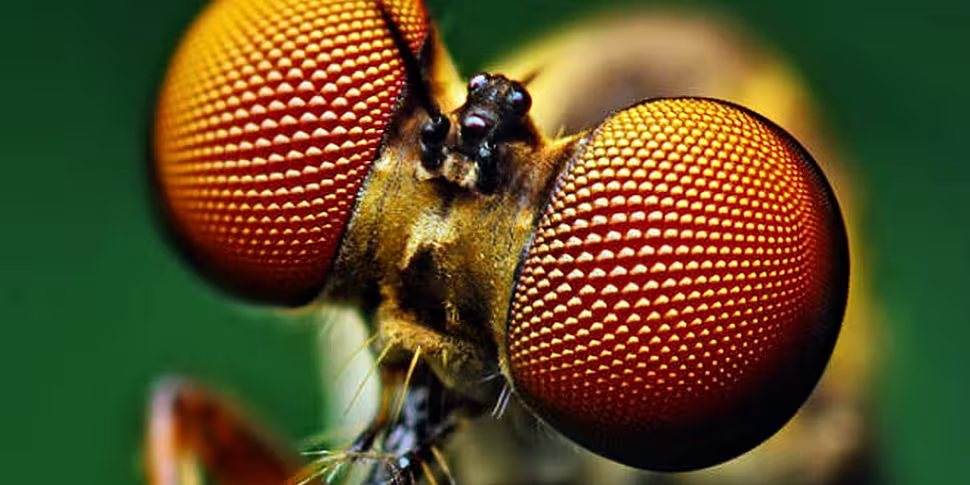A typical insect eye is made up of hundreds of ommatidia, each containing its own lens and a cone that helps direct light towards the fly’s light-sensitive organ. Each ommatidium points in a slightly different direction, with the sheer bulk (many thousands of individual ommatidia in some insects) covering a huge amount of different angles in a hemispherical structure.
The result is an eye biology that has distinctive advantages over typical human or animal eyes, and particularly existing camera technology. They have a wide field of view that keeps objects both far & away in focus, while also being extremely sensitive to motion (helping them avoid those pesky swatters).
The new camera design uses individual lenses to mimic 180 ommatidia. Grouped together by cones and a layer of silicon photodetectors, the initially loose structure is then carefully blown into a curved shape that further approaches the distinctive layout of the insect eye, while carefully avoiding lens distortion.
The new camera technology could potentially be used in environments where a wide space needs to be captured. Examples of possible future implementations include elaborate surveillance & CTV setups where space is a premium, or monitoring unmanned & robotic flights.
While the prototype model only captures black & white images, the researchers predict that they’ll be able to expand the design to colour cameras. Talking to Nature, John Rogers – a member of the project team at the University of Illinois – said “we’d like to do a dragonfly, with 20,000 ommatidia,” which would require an even more miniaturised design. Rogers also said the camera design could theoretically be altered to ‘improve’ upon insect biology and adapt the field of view for individual situations.









